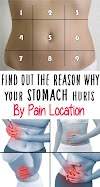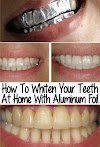A striking characteristic of the Korean hand chart concerns the fact that the spine is located in the dorsal central axis of the hand. KHT combines the simplicity of reflexology with the sophistication of 3000 years of Oriental Acupuncture Medicine. Today, hundreds of thousands worldwide practice KHT … both on others and on themselves.
Korean Hand Therapy will free you from pain!
WHAT IS IT? Korean Hand Therapy is a system for awakening the body to health and wellness through your hands. By stimulating specific points on your hands, you can resolve pain and balance internal organ function.
KHT includes the reflexology level of treatment, similar in concept to the reflexology of the foot. The KHT reflex map of the hand was discovered in 1971 by Dr. Tae-Woo Yoo, O.M.D., Ph.D. in Korea and has been clinically and experimentally tested for accuracy. KHT also includes the entire acupuncture meridian energy system, but in miniature, on the hands. This addition to the reflex system gives hand therapy many treatment options, as explained below.
STIMULATING POINTS in KHT is done with your fingers, point massage, tiny tape-on metal acu-pressure pellets, through an infrared heat device, miniature acupuncture needles, lasers and electrical stimulation.
GREATER HEALING EFFECTIVENESS in the KHT system is possible because the entire acupuncture system found on the whole body is also found in miniature on the hands. This means that you can add the healing power of acupuncture principles to the basic KHT hand reflexology system.
HEALTH PROFESSIONALS OF ALL DISCIPLINES can add the power of KHT to their present methods of working with clients.
KHT is practiced by a diverse group of health care professionals throughout the world. Current practitioners include acupuncturists, medical doctors, chiropractors, physical therapists, nurses, nurse practitioners, massage therapists, and laypersons. Text books are available in English; German; French; Spanish; Japanese; and Russian (soon).
WHAT IS reflexology?
The general purpose of ‘reflex zone therapy’ (a.k.a. reflexology) is to ‘balance’ the nervous system. Reflexologists usually use an approach where the body is divided into ten equal vertical zones: five zones on the right side of the body + five zones on the left side of the body (e.g. the first zone corresponds with the thumb in the hand and the big toe in the foot). This vertical approach goes parallel to Chinese philosophy of the meridians & the medical so-called ‘dermatomes’ (= areas of skin that are mainly supplied by a single spinal nerve); However, there is no direct connection between the 10 vertical reflex zones and 12 meridians, nor do these concepts directly relate to the physical nerve system. This implicates that in general hand reflexology & foot reflexology can be recognized to represent massage techniques that are quite similar to the reflex points & techniques used in acupressure (and the philosophy behind acupuncture).
The word reflexology is derived from the so-called ‘reflex arc’, which refers to a neural pathway that controls an action reflex. Formally, there are two types of reflex arc: ‘autonomic reflex arc’ (affecting inner organs) and ‘somatic reflex arc’ (affecting muscles); reflexology can be associated with the first type. This implicates that (hand) reflexology should not be associated with casual uses of the terms: ‘reflex’, ‘hand reflex’ and ‘primitive reflexes’.
Unfortunately, there is no consensus among hand reflexologists about how reflexology exactly is supposed to work. For example: in many hand reflexology charts the heart is located at the radial side of the hand card (sometimes it gets associated with the 2nd phalange of the thumb) – which sort of represents the opposite of the principle described by the meridian philosophy.
Some reflexologists even claim that the zones in reflexology maps represent only approximates and may vary from person to person. Hand reflexology experts generally work with charts that propose sort of a likewise model for various internal organs & body parts. However, most individual reflexology hand charts do show some significant differences compared to other charts.
Many reflexology hand charts are available on the internet; charts are being presented in various formats, and many printable reflexology hand charts are available. However, for people who are not familiar with the basics of hand reflexology might get confused by the fact that many hand maps display unique characteristics – which often reflect the personal view of the hand map designer. Authors dispute the representative locations in the hand that may get associated with the eyes and the heart, so these aspects belong to the key-elements of disagreement in hand reflexology.
In general, in most charts the eyes get associated with one or more sections of the index finger and/or middle finger. In some Western hands reflexology charts the eyes are associated with the 2nd phalange of the index finger or the middle finger. But in the Korean ‘Koryo hand therapy’ charts the eyes are placed on the tip of the middle finger.
Hand Reflexology: ‘Do-it-yourself’!!!
Your 10-minute hand reflexology self-treatment starts with:
- Step 1 – Pinching the finger tips and thumb of your right hand.
NOTICE: The pressure applied to each finger should be firm, but make sure it is not painful. A few seconds for each single fingertip will be sufficient. The following step is to repeat this process on your left hand.
The next steps are:
- Step 2 – Pinching the sides of your fingertips;
- Step 3 – vigorous finger rubbing;
- Step 4 – more finger rubbing but now the tops and bottoms + rubbing the sides of your fingers;
- Step 5 – finger tugging: grasp each single finger (and thumb) at the base and tug firmly;
- Step 6 – pinch and pull the webbed areas between your fingers;
- Step 7 – gently massage the top of your hand with your thumb;
- Step 8 – gently massage your inner wrists;
- Step 9 – massage firmly the palm of your hand; and step 10 – centering by your thumb deeply in the center of your palm.







0 Comments